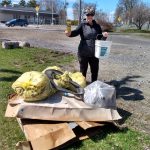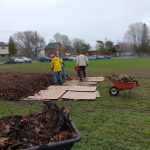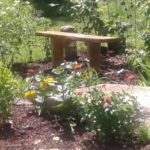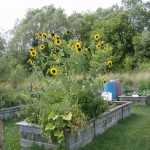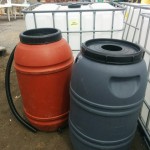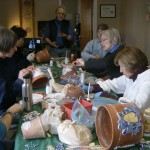Here are some of the garden qualities to consider for attracting butterflies.
- A sunny spot – at least six hours a day
- An ideal garden would be at least 100 sq feet but even a pot helps, and a butterfly garden can be part of an existing garden
- Light, well-drained is best, but is not essential
- Butterflies appreciate shelter from wind
- Dense plantings with a mix of tall and short plants provides shelter from wind and predators
- Plant both host plants and nectar plants.
- Host plants are where butterflies lay their eggs for the next generation and are the exclusive food source for the developing caterpillars.
- To attract monarch butterflies, you must plant at least two species of milkweed native to your area. There are more species than you may realize! Some possibilities are common milkweed (Asclepias syriaca), swamp milkweed (A. incarnata, which tolerates moist sites) and butterfly milkweed (A. tuberosa).
- If you are pursuing Monarch Waystation certification, you need at least ten milkweed plants. A variety of plants with different blooming times prolongs the time butterflies can use it.
- Other butterfly species have their own favourite host plants
- Nectar plants are food for fully-developed butterflies. Consider annuals and perennials.
- Annual plants, which bloom quickly but don’t return for a second season, play a crucial role. Examples include: Gaillardia, Cosmos, Marigold, Verbena, Zinnia and more.
- Perennials are slower to establish when first planted, but thrive in subsequent seasons. Examples include: Bee Balm, Black Eyed Susan, Coreopsis, Hollyhock, Echinacea and more.
- Choose a variety of early, mid and and late-season bloomers to provide food throughout the season.
- Group plantings so there are masses of colour, to provide an easy target and many blooms within easy reach
- This is a particularly good source with plant photos. https://www.americanmeadows.com/blog/2016/06/17/how-to-create-a-monarch-waystation/
Other Considerations
- Do not use pesticides
- Don’t be too quick to clean it up dead stalks before winter
- Provide puddling spots for to water and minerals for the butterflies. Note they prefer damp conditions, not standing water
- Smooth flat rocks provide a warm resting spots
- Provide protective plants nearly, eg. trees, shrubbery, and vines with strong, woody stems and dense, durable leaves, to provide storm protection.
- These protective plants are also sought for monarch caterpillars to pupate on; they’ll roam sometimes as far as 40 feet from their host milkweed searching for a secure place to build their chrysalis

